Last Saturday i finally dragged myself out of the armchair and visited the PAV, the Parco d’Arte Vivente (Park of Living Art – Experimental center of contemporary art) in Turin. Although i was appalled by the utter wrongness of the ‘interactive’ displays i saw in some of the rooms, I’ll be forever grateful to the place for bringing to Turin exciting artists. Michel Blazy, Andrea Caretto and Raffaella Spagna and now Brandon Ballengee.
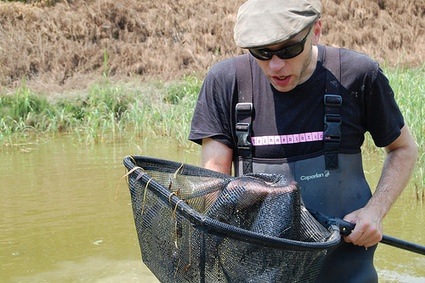
In Spring and Summer the artist, activist and ecological researcher was in town for a series of field trips on the river Po looking for tadpoles and frogs.
The amphibians studied by Ballengee are praeter naturam, beyond nature. Because of pollution, parasites or predators, the frogs have morphological anomalies such as extra, deformed or missing limbs.
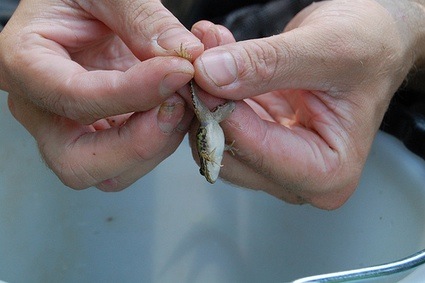
According to Ballengee, amphibians are environmental canaries in the coal mine. The state of this sentinel group of animals is rather worrying, they are not only declining all across the globe, they are also presenting increasing levels of deformities.
An article from the BBC, which quotes Ballengee as well as a series of scientists, looks into the reasons for the deformities. Many researchers believe the problem is caused by chemical pollution. Others say that predators or parasites might be responsible for the deformities.
Many amphibians with extra limbs were actually infected by small parasitic flatworms called Riberoria trematodes. The parasites burrow into the hindquarters of tadpoles where they physically rearrange the limb bud cells and thereby interfere with limb development.
Missing or deformed limbs are caused by dragonfly nymphs. The insect rarely eats the entire tadpoles. Instead, they grab it, chew at a hind limb -often removing it altogether- and then release their prey. If the tadpole survives it metamorphoses into a toad with missing or deformed hind limbs, depending on the developmental stage of the tadpole.
However, scientists don’t completely rule out chemicals as the cause of some missing limbs.
For more information, check out this video interview of the artist by the Arts Catalyst:
Images of the field trip Ballengee, scientists and members of the public made on the river Po near Turin where, unfortunately, they found a few specimens of deformed amphibians:
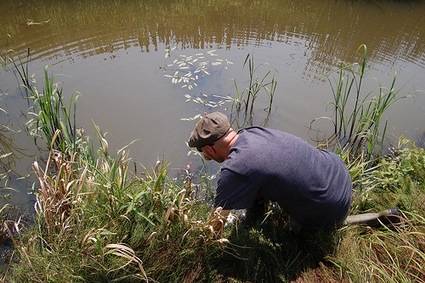
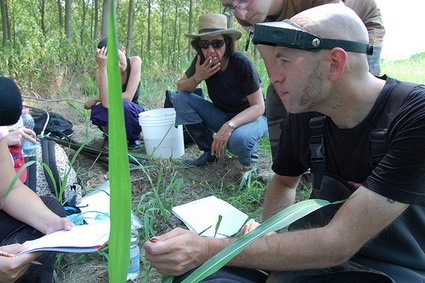
At PAV Ballengée shows a variant of Styx, a table where glass dish display specimens of “cleared and stained” deformed frogs. The body of each tiny frog has been preserved and chemically altered so that bone is dyed red and cartilage blue with remaining tissues transparent.
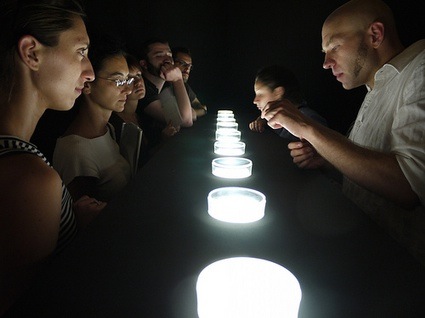
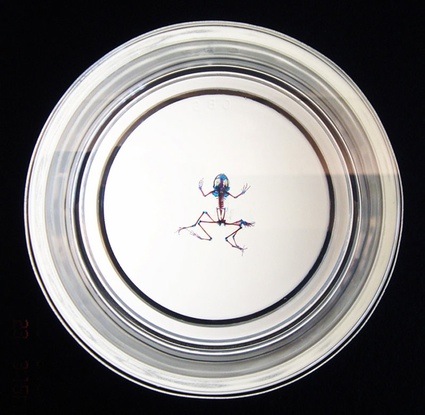 Cleared and stained deformed Pacific treefrog
Cleared and stained deformed Pacific treefrog
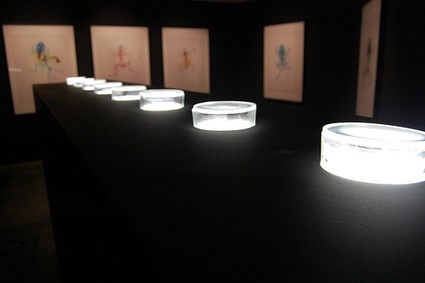
In the same room is a series of Malamp Iris prints, large-scale portraits of deformed frog specimens.
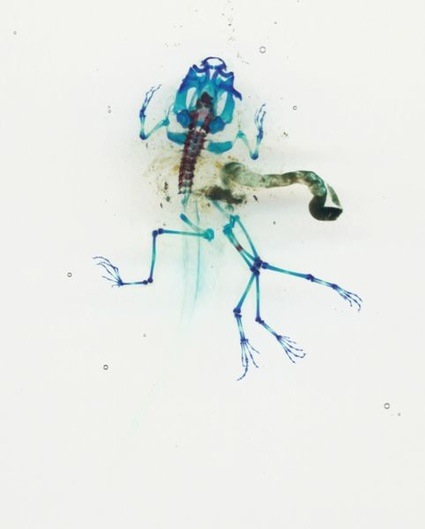 Brandon Ballengée, DFA25 Promethéus, 2003/2007, Malamp series, Iris print
Brandon Ballengée, DFA25 Promethéus, 2003/2007, Malamp series, Iris print
Also on view at PAV, the Turin Po River Eco-displacement, a portion of the aquatic ecosystem, small paintings made from polluted pond water, coffee and ash and two videos documenting Ballengee’s field trips in the UK and in Turin.
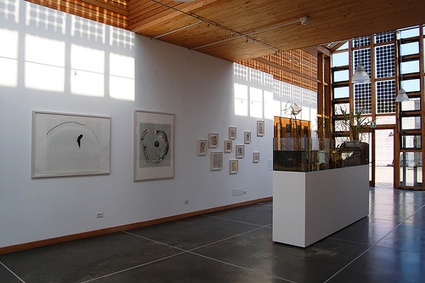
Previously: Biorama Huddersfield and Living Materials.
Praeter naturam opens until September 26th, 2010 at the PAV, inTurin.
